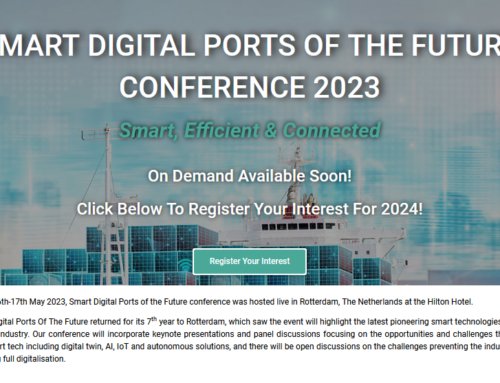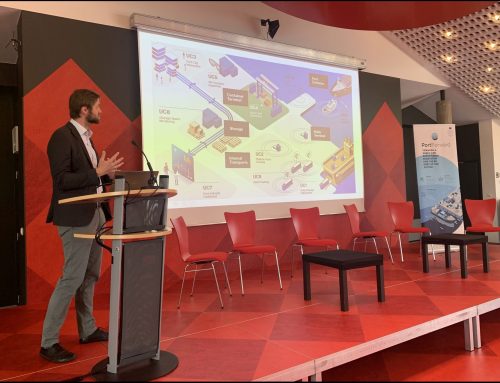The 5th and final Advisory Board meeting of PortForward took place virtually in mid-May with 14 attendees in total. During the final meeting two Use Cases were presented: the dynamic storage space monitoring Use Case and the port-city interactions service Use Case.
The Chairman of the Advisory Board, Mr. Roberto Cinquegrani, started the meeting by welcoming the attendees and by giving a brief presentation of the agenda. He then introduced Mr. Olaf Poenicke, PortForward Project Coordination Manager, from Fraunhofer IFF, who presented the dynamic storage space monitoring Use Case. The dynamic storage space monitoring tool was developed by Fraunhofer IFF, in cooperation with the Port of Magdeburg, and is an innovative solution that improves the management of storage areas in multipurpose terminals. Using LIDAR-based sensor technology, Fraunhofer IFF developed a software tool (Dynamic Storage Space Monitoring – DSSM) that allows operators to allocate freight to be stored in a more orderly, efficient, and secure manner through a virtual location grid. Port terminal operators can see a virtual grid that will change colour, indicating the precise storage location of a particular good. There are various benefits of using technology like LiDAR applied to operations at a container terminal. For example, LiDAR sensors:
1. Allow the recognition of 3D shapes in storage areas, which is certainly more feasible than simple 2D images.
2. Offer high coverage (>200 m) with high accuracy (+ 2 cm).
3. Are robust towards changing environmental conditions (e.g., lighting).
4. Are now available for low costs (<1.000 €).
Next, Ms. Anastasia Semenyuk, Research Associate at Fraunhofer IFF, provided a short demonstration of the tool using the developed software. Ms. Semenyuk showed the graphical peculiarities of the tool and a complete 3D map of the port of Magdeburg, obtained through the Digital Virtual Twin model. According to predefined constraints, the demonstration simulates the proper storage of containers in the yard by handling cranes and heavy vehicles.
The presentation and demonstration of this tool gave the opportunity for a very fruitful discussion to emerge among the Advisory Board members. The members agreed that this solution has a wide range of applications considering the need for multifunctional terminals to effectively use the available space according to the different kind of freights. In addition, the tool could be integrated with automatic recognition of freight through the integration with different sensors (e.g. OCR cameras that read container labels or shape recognition software) which may then link to other several administrative and operational information (date of arrival and estimate date of departing, priority in embarking).
Then, Mr. Cinquegrani introduced Mr. Sergio Martinez Navas, Principal Researcher at Leitat, who presented the port-city interactions service Use Case. The port-city interactions service tool was developed by Leitat, in cooperation with the Port Authority of the Balearic Islands. It is a solution to support routing decision and prioritizing different destinations. Based on the recognition of mobile phone pings to WiFi points, the developed solution provides services to users to offer them information about:
1. The crowding of the city’s main attractions.
2. Decision support on the best priorities in planning the city visit, given the snapshot situation.
The tool runs on a mobile phone application and is enriched with several information functions concerning the port, the arrival, departure and possible delays of ferries and cruises, and key information about the city’s attractions. Business intelligence algorithms analyse historical data to estimate and determine potential crowded places. The application can propose alternative routes with less busy roads to users. However, this service is not suitable for long distances, as the alternative routes could make the journey longer. Mr. Martinez Navas shared also a video showing a short demonstration of the tool during an indoor test.
After the two presentations, the Advisory Board members generated a discussion which concluded that the 2 tools presented provide a viable alternative to existing solutions. The meeting ended with Mr. Cinquegrani thanking the members not only for their participation in this meeting but also for their overall comments and valuable feedback on PortForward’s work.






